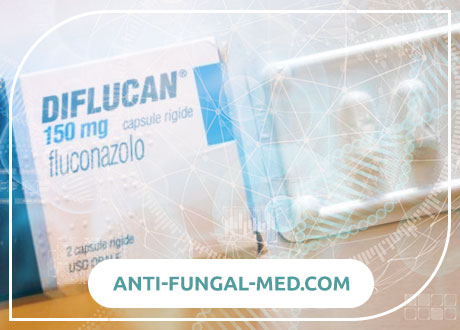
Introduction
Believe it or not, but you have probably been exposed to more fungi, and by extension, fungal infection than you think. Having athlete's feet or a yeast infection are some of the more common examples of fungal infections today. Fungal infections can be easy to deal with, or deadly depending on the type of fungus you come into contact with. In this article, we will explore fungal infections, what they are, how they're formed and how we can treat them.
Fungi are all around. There are a large number of various types of fungi on Earth, yet just around 300 of those are known to make individuals sick. Fungal infections are frequently caused by tiny organisms that are regular in nature.
What is a fungus?
A fungus is a tiny, primitive living being. Mushrooms and moulds are the most common types of fungi that we come across in our lifetimes. These organisms live in the air we breathe in, in the soil we walk on, on plants and in water. Some even live inside the human body. Luckily, just a few of these fungi are harmful enough to cause any real damage.

Fungi may reside in modest spores noticeable all around. You can breathe in the spores or they can arrive on you. Therefore, it's really no surprise that fungal infections regularly begin in the lungs or on the skin. You are more likely to be infected by a fungal disease if you have a weak immune system, so take care!
Fungi can be difficult to kill. For skin and nail infections, you can directly apply ointments to the problem areas. Oral antifungal drugs are also accessible for serious contaminations.
Types of fungus infections
There are many types of fungus infections. In this section, we will discuss the most common types of fungus infections, their symptoms and their treatments.
1. Athlete's Foot
Athlete's foot is a typical fungus infection. Its growth develops in warm and damp conditions, most commonly in our feet- between the toes. The infection is called "athlete's foot" because athletes and those who are exposed to the warm, damp environment of the locker room, are exposed to this infection. The continuous usage of socks and sports shoes create the ideal habitat for the fungi to live in and grow. Though commonly associated with sports personalities, anyone can be infected with athlete's foot. It is most normal in hotter atmospheres and summer months, where it can rapidly duplicate.
Symptoms
The common indications of athlete's foot may change marginally from individual to individual. However, the more symptoms include:
- redness or rankles on the influenced zone
- the contaminated skin might be delicate, or layers may begin to separate
- peeling or splitting skin
- the skin may scale and peel away
- tingling, stinging, or consuming sensations in the contaminated territory
Treatment and Prevention
Not every single irritated foot is due to athlete's foot. Specialists more often than not analyse the disease by scaling skin off the patient and examining it under a magnifying lens for proof of any fungi. There are a couple of various fungi that can lead to athlete's foot. The contamination may contrast relying upon the type of fungi that infects it.
Athlete's foot is commonly cured with topical antifungal balms, which are accessible to buy over-the-counter or on the web. Extreme contaminations can require extra oral prescriptions as well. The feet will likewise should be looked after and kept dry to help destroy the growth.
In order to prevent athlete's food, one must incorporate the following techniques:
- permitting the feet a lot of air to inhale
- keeping them clean and dry
- wear open shoes in showers or locker rooms.
2. Yeast Infection
Yeast infection is a common type of fungal infection. The most common types of yeast infections are found in the vaginal area in women. Vaginal yeast infections are a typical type of Candida abundanc. An excess of the fungi, Candida, disturbs the natural adjustment of the microscopic organisms and yeast in the vagina. This unevenness of microbes might be because of anti-microbials, stress, and hormone lopsided characteristics, or poor dietary patterns, in addition to other things. Candida contaminations can likewise normally cause parasitic toenail diseases and diaper rash.
Symptoms
Symptoms of a yeast contamination are as follows:
- tingling and swelling around the vagina
- consuming sensations or agony amid pee or intercourse
- redness and soreness on and encompassing the vagina
- abnormal vaginal release, for example, dark bunches that take after curds or an exceptionally watery release
A rash may create after some time sometimes. Yeast diseases ought to be dealt with rapidly, as the manifestations may end up extreme if left untreated.
Treatment and Prevention
The great side effects of a yeast contamination make them simple to analyse. Specialists may get some information about the individual's therapeutic history, for example, any past yeast contaminations or sexually transmitted diseases (STDs). They may likewise ask whether the individual has been taking anti-infection agents as of lately. Specialists will then inspect the vaginal dividers and cervix for indications of contamination, taking cells from the vagina if important for legitimate conclusion.

Treatment of yeast diseases relies upon their seriousness. Standard medicines incorporate creams, tablets, or suppositories, which are accessible by means of remedy, or over-the-counter or on the web. Confused diseases may require complex medicines.
Keeping away from yeast contaminations starts with an adjusted eating regimen and legitimate cleanliness. Wearing baggy dress produced using common strands may likewise help anticipate disease. Washing clothing in heated water and changing undergarments regularly can likewise help counteract contagious development.
3. Fungal Nail Infection
Onychomycosis, additionally called tinea unguium, is a fungal infection that influences either the fingernails or toenails. Fungi flourish in warm, clammy conditions. The very fungi that are behind athlete’s foot, and ringworm can also cause nail contaminations. Contagious contaminations ordinarily create after some time, so any prompt distinction in the way your nail looks or feels might be excessively unpretentious, making it impossible to realize whether you have the infection at first or not.
Symptoms
Fungal nail infection may have the following symptoms:
- scaling under the nail
- white or yellow streaks on the nail
- a disintegrating corner or tip of the nail
- chipping white regions on the nail's surface, which may incorporate pits in the nail
- the presence of yellow spots at the base of the nail
- loss of the nail
Treatments and Prevention
Of course, it is possible to treat the infection. While doctors do not usually recommend over-the- counter products to heal nail infections, they do provide with various antifungal drugs such as Lamisil, Sporanox or Diflucan. You may utilize other antifungal medications, for example, antifungal nail enamel or topical arrangements. These medications are brushed onto the nail similarly that you would apply nail clean. Depending upon the kind of fungus causing the disease, and additionally the degree of the contamination, you may need to utilize these medicines for a while. Treatment isn't ensured to free your body of the contagious disease totally. In half of all cases, the fungal nail infection will return. Complexities from parasitic disease are also possible. However, in order to prevent the infection, you may take the following steps:
- utilizing antifungal splashes or powders consistently
- washing your hands in the wake of contacting tainted nails
- drying your feet well in the wake of showering, particularly between your toes
- getting nail trims or pedicures from reliable salons
- using your own things for nail trims or pedicures
- wearing socks that limit dampness
- abstaining from being shoeless out in the open spots
- diminishing your utilization of simulated nails and nail clean
4. Aspergillosis
Aspergillosis is an infection caused by Aspergillus, a typical form of fungus that lives in the general environment. A great many people take in Aspergillus spores consistently without becoming ill. Be that as it may, individuals with debilitated immune systems or lung illnesses are at a higher risk of getting medical issues because of Aspergillus. The sort of medical problems caused by Aspergillus include lung diseases, and infections in different organs.
Symptoms
Different type of Aspergillosis can cause different symptoms. The most common ones include:
- Shortness of breath
- Cough
- Chest pains
- Fever
- Stuffiness,
- headaches
Treatment and Prevention
The recommended medication for aspergillosis is itraconazole, an antifungal drug that must be taken on prescription. Other antifungal solutions used to treat aspergillosis incorporate lipid amphotericin plans, posaconazole, isavuconazole, itraconazole, caspofungin, and micafungin. At whatever point conceivable, immunosuppressive prescriptions ought to be ended or diminished. Individuals who have extreme instances of aspergillosis may require medical procedure.
In order to prevent the infection, try to:
- keep away from territories with a great deal of clean like development or removal destinations.
- Keep away from exercises that include close contact to soil or tidy, for example, yard work or planting. In the event that this isn't conceivable,
- Wear shoes, long jeans, and a since quite a while ago sleeved shirt while doing open air exercises, for example, cultivating, yard work, or going to lush zones.
- To diminish the odds of building up a skin disease, clean skin wounds well with cleanser and water, particularly on the off chance that they have been presented to soil or tidy.
5. Fungal Eye Infections
Fungal eye infections are extremely uncommon, yet they can be extremely severe. The most widely recognized route for somebody to build up a fungal eye disease is because of eye damage, especially if the damage was caused by plant material, for example, a stick or a thistle.
Symptoms
The symptoms of the fungal infection are like the indications of any other kind of eye disease, and can include:
- pain
- redness
- Obscured vision
- Discharge from the infected eye.
Treatment & Prevention
If you think you have a fungal eye infection, you must contact your doctor immediately. The treatment of the eye depends upon the kind of fungus, the part affected and the severity of the infection. Depending on this, the doctor may prescribe some form of medication or eye drop. Please note that in severe cases, an eye surgery may need to be performed. Preventing a fungal eye infection can be done by wearing protective eyewear, specially if you work in the agrarian or related sector and may be exposed to plants or anything which may injure the eye regularly. It is also recommended that people who wear lenses, should take care of their contacts and make sure that they wear them properly.
Conclusion
These were the just some of the many fungal infections which may trouble you. As you can see from the list, these fungal infections range from fairly common infections which may be cured with the help of over-the-counter drugs to some that require prescribed pills from the doctor, to extremely rare infections which may need immediate medical attention. If you ever feel that your body displays the symptoms of any of the infections mentioned, following your use of the environment each of these fungi thrive in, we recommend that you contact your doctor immediately. It is highly unrecommended that you try to treat yourself. Fungi infections have the ability to go for the time being and then return again- but this time, they may be more severe than the last time. It is, hence, advisable that you visit the doctor the first time round and make sure that you do not get the disease one more. Along with the symptoms, we have also mentioned treatment- including the serious case, as with the fungal eye infection, where an eye surgery may be necessary in the most severe form of the infection. Apart from that, we have also provided prevention methods to enable you to take the necessary precautions to prevent these infections. Hope you’ve found this article useful!
 DE
DE FR
FR IT
IT ES
ES



